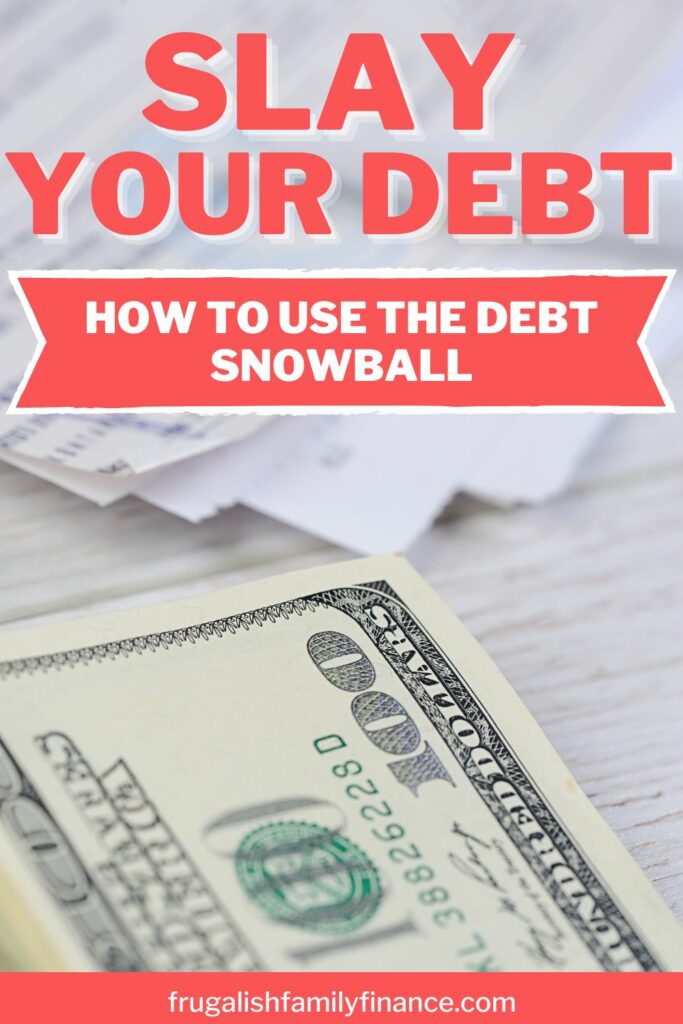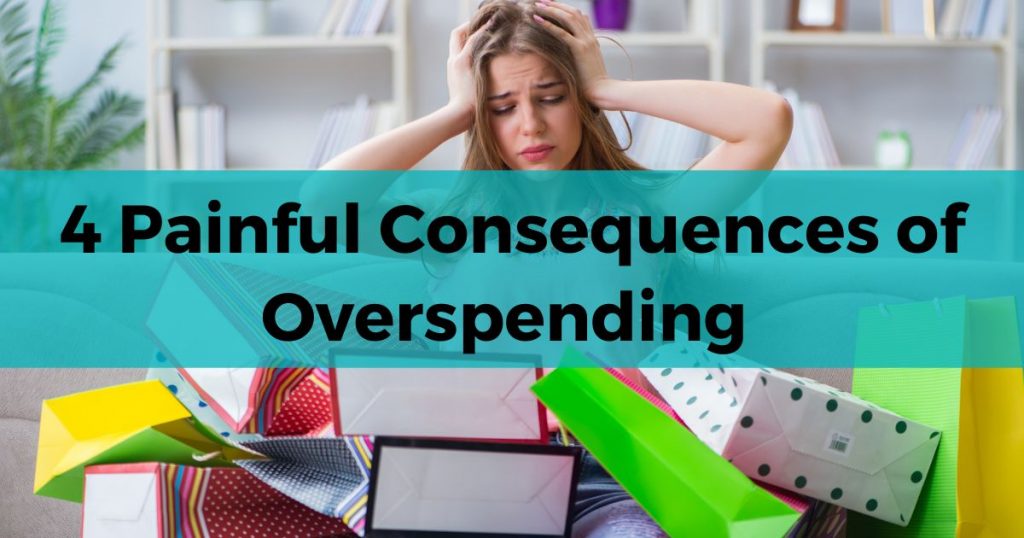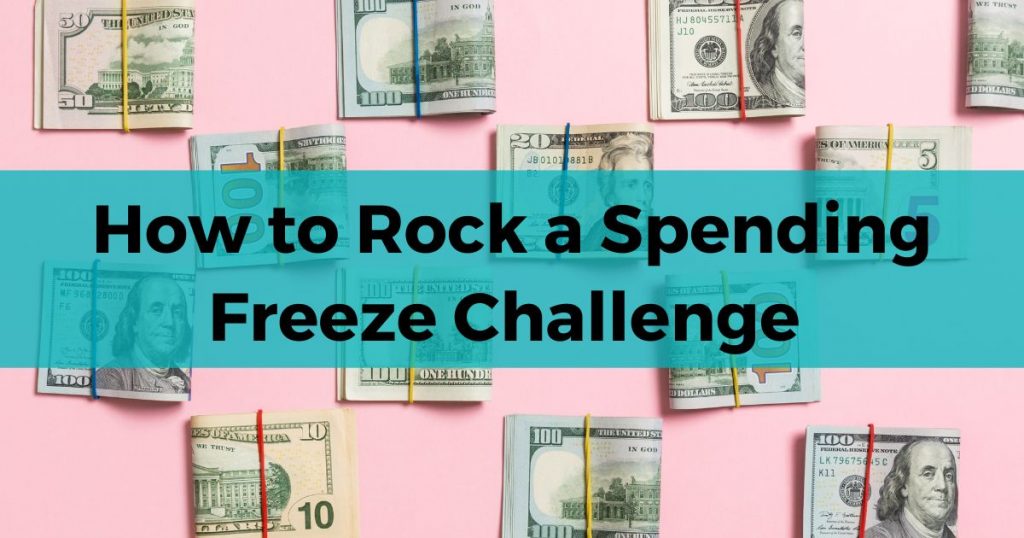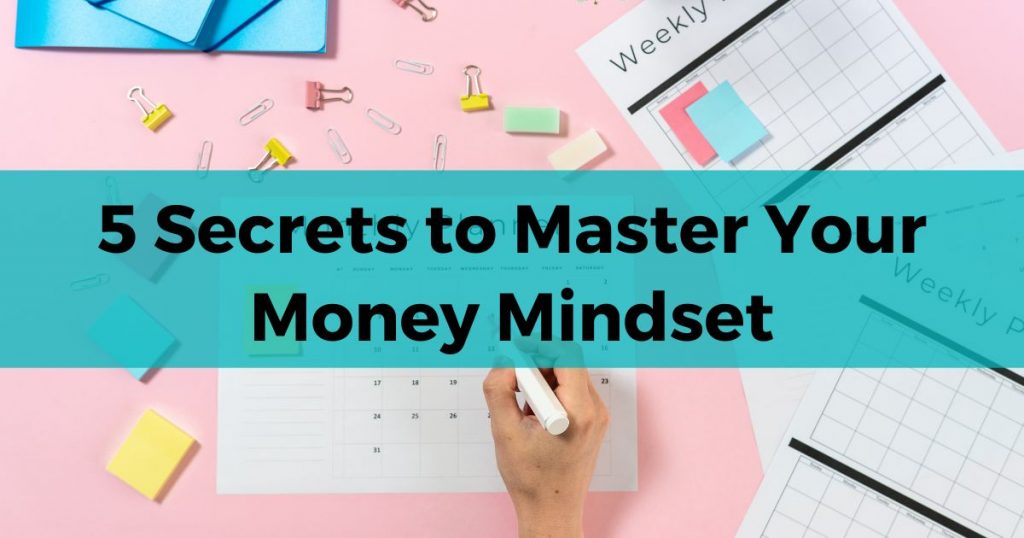Debt and living paycheck to paycheck seem to be the norm these days.
According to Bankrate, the average American has $96,371 of consumer debt (this includes credit cards, personal loans, mortgages, and student loan debt). Living like this, beyond your means, can lead to a huge amount of financial stress.
Trust me, we’ve been there.
At one time, we had over $227k of debt (not including our home). We were living beyond our means, paycheck to paycheck, and fed up with our financial situation.
We decided to take control of our money and tackle our debt head-on. We made a plan and some hard decisions and sacrifices. Finally, in April 2020, we became debt free!
Paying off debt is hard work, but the reward is so worth it.
Taking control of your money and paying down your debt will allow you to live financially stress-free. So if you’re ready to slay your debt, let’s talk about how to do it using the debt snowball method.
Disclaimer: This post may contain affiliate links. This means I receive a small commission, at no extra cost, if you purchase using the links below. Please see my earnings disclaimer for more details.
Table of Contents
What is the debt snowball?
The debt snowball is a debt payment strategy that starts with paying off the smallest debt first and then moving to the next. You gain momentum as you roll the minimum balance of the debt you paid off into the next smallest debt.
Why does the debt snowball work?
The debt snowball works because you pay off the smallest loan amounts first, resulting in quick wins. These small victories keep you motivated to keep going on to the next.

How does the debt snowball work?
Organize and list all your debts from smallest to largest. Then, pay the minimum amounts on all debts, with extra going to the smallest debt.
You roll the payments into the next smallest debt when the first debt is paid off. With each debt paid off, the amount you can pay to the next debt increases like a snowball.
So, let’s go through and work this out in a real-life situation. Let’s say these are your debts listed from smallest to largest amount.
| Type of Debt | Amount Owed | Minimum Payment |
|---|---|---|
| Medical bills | $300 | $35 |
| Credit card debt | $1500 | $125 |
| Car loan | $5000 | $150 |
We are going make some budget cuts or start a side hustle and earn $300 to pay toward debt on top of the minimum monthly payments (total $610). Here is what the debt snowball would look like (let’s assume it’s a perfect world with 0% interest).
| Medical Bills | Credit Cards | Car Loan | |
|---|---|---|---|
| $610 | Balance: $300 Payment: $300 | Balance: $1500 Payment: $160 | Balance: $5000 Payment: $150 |
| $610 | Paid Off | Balance: $1340 Payment: $460 | Balance: $4850 Payment: $150 |
| $610 | Balance: $880 Payment $460 | Balance: $4700 Payment: $150 | |
| $610 | Balance: $420 Payment $420 | Balance: $4550 Payment $190 | |
| $610 | Paid Off | Balance: $4360 Payment: $610 | |
| $610 | Balance: $3750 Payment: $610 | ||
| $610 | Balance: $3140 Payment: $610 | ||
| $610 | Balance: $2530 Payment: $610 | ||
| $610 | Balance: $1920 Payment: $610 | ||
| $610 | Balance: $1310 Payment: $610 | ||
| $610 | Balance: $700 Payment $610 | ||
| $610 | Balance: $90 Payment: $90 Paid Off! |
Do you see how each debt rolls over to the next, making the payments bigger and the debt quicker to pay off? In a year, this debt would be paid off just by paying the minimums and putting an extra $300 towards it.
Tips for paying off debt
Here are a few tips to help you get to the finish line quicker.
Stick to your budget
A budget is really important if you want to pay off debt and build wealth. You have to have an understanding of where your money is going at all times.
Not only do you have to create a monthly budget, but you have to track your spending to make sure you stick to it.
Related:
How to Create a Zero-Based Budget to Simplify Your Finances
How to Avoid Budget Burnout: 11 Tips for Staying Motivated
12 Important Reasons and Benefits of Tracking Your Expenses
Make budget cuts
Having a budget will help to see how much you can afford to pay each month towards debt and where you can make extra cuts.
Trimming the fat off your budget is a great way to free up extra money for your debt payoff.
Here are some budget items that can take up a huge chunk of your budget and how to cut them down to save some extra money.
- Groceries: meal plan, shop sales, and buy generic
- Gym memberships: cancel and workout at home
- Cable: cut cable and use a cheaper subscription service
- Interest rate: negotiate a lower interest rate or monthly payment
Related:
How to Save Money on Cable TV and Streaming Services
39 Really Easy Ways to Conserve Energy at Home
How to Save Money on Groceries Without Using Coupons
The Art of Meal Planning for Busy Moms (And Dads)
Increase your income
Increasing your monthly income is the fastest way to pay down your debt.
“Your most powerful wealth-building tool is your income.”
-Dave Ramsey
So, figure out how you can make some extra cash. Here are a couple of options…
- Ask for a raise
- Get a second job
- Turn a hobby into a side hustle
- Sell stuff around the house
Related:
Turn Clutter into Cash: How to Declutter and Make Money
Ultimate Guide for How to Get Sales on Poshmark in 2023
Stop using your credit card
This is one of the hardest things to do, but you have to stop using your credit cards. Cut them up if you have to!
As a rule of thumb, if you don’t have the money, you don’t need to buy it.
Try a spending freeze to help you detox from your credit cards. It will encourage you to spend more intentionally and save money.
Track your debt payoff
Use a visual to help track your debt payoff. A visual tracker will help keep you motivated. Grab your free debt tracker printable below!
Save a starter emergency fund
I know you’re anxious to pay off debt, but you have to have something to fall back on in an emergency.
So, put all extra money into your savings until you have $1000 saved for emergencies.
An emergency fund will keep you from taking on more debt if an unexpected expense pops up and you can’t wait.
Change your money mindset
You have to make a lifestyle change. Which means thinking about money and spending money differently.
You have to decide to live within your means and spend with intention. This means you have to stop comparing what you don’t have and find contentment with what you do have.
Embracing a more minimalist lifestyle can help you live a more intentional life.
Related:
5 Secrets to Master Your Money Mindset
How to Minimize Your Life and Maximize Your Happiness
Don’t miss payments
Make sure to track your bills and pay them on time. You don’t need extra fees for bills paid late!
Frequently asked questions about paying off debt
Here are a couple of the most common questions about paying off debt.
Debt snowball vs. debt avalanche?
Here is the difference between the two debt payoff methods.
| Debt Snowball Method | Debt Avalanche Method |
|---|---|
| Organize and list debts from smallest to largest amount. | Organize and lists debts from highest to smallest interest rate. |
| Pay the minimums plus extra on the smallest debt. | Pay minimums plus extra on the debt with highest interest rate. |
| Roll over payments to next smallest debt and repeat. | Roll over payments to the next highest interest rate and repeat. |
With the debt snowball, you will see faster results that will motivate you to keep going. You’ll pay less interest using the debt avalanche, but it may take longer to achieve those wins, which could result in giving up.
Is it better to pay off debt or save money?
It’s essential to have money set aside for emergencies or unexpected expenses. Therefore, you want to have a starter amount in your emergency fund.
But after you have that starter emergency fund, it is better to pay off your debt. You can’t start building wealth if you have debt stealing your income every month.
What is the best way to pay off debt?
I have tried both the debt snowball and debt avalanche. I (like many others) have succeeded with the debt snowball method and would highly recommend it. But, it does boil down to personal preference.
I felt overwhelmed when I tried the debt avalanche because my highest interest-rate credit card balance was $10,000. I felt like I wasn’t getting anywhere with it because I wasn’t seeing those small wins. Eventually, I gave up (every single time I tried the debt avalanche).
But, when we used the debt snowball method, we saw and experienced those small wins that eventually turned into big wins.
The small wins kept us motivated as we continued through our debt-free journey. Each time we paid off a debt, we got closer to the light at the end of the tunnel.

Is paying off all debt a good idea?
Yes! Not having minimum payments that steal your monthly paycheck frees up more money to build wealth and enjoy.
Did you know Americans pay an average of 120 billion dollars in credit card interest and fees yearly? That’s crazy! Banks make so much money off the interest we pay for stuff we don’t need.
I have not heard of anyone who regrets their decision to pay off their debt.
Conclusion
Debt can wreak havoc on your life. It can lead to living paycheck to paycheck, financial stress, and strained relationships (just to name a few).
But you can break the cycle by taking control of your finances and changing your lifestyle and mindset. Make sure to create a budget, increase your income, and use the debt snowball to slay your debt!
Are you using the debt snowball to pay off debt? Leave a comment below!





